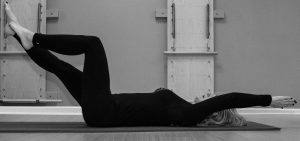
On a recent trip to New Orleans, I checked into my hotel, changed my clothes, and headed to the gym. I needed to work out some rough edges from my long day of traveling and the streets were crowded. The gym area was sparse with only one picture hanging – Joseph Pilates’ mat exercises. I placed some clean towels on the floor and started to go through the exercises . . 100s, roll up, rollover, . . . modifying the Jack Knife, Boomerang, Crab, and Corkscrew. On completion of the 34 classic pilates moves, I felt long, supple, and relaxed. It was the perfect remedy! I am in awe of these exercises which include breathing, abdominal work, leg and arm work, balancing, flexion, extension, side bending, and rotation! To me it’s genius! I can’t help but wonder HOW!?
Born in 1882, in Monchengladbach, Germany, Pilates suffered from rickets, asthma, and rheumatic fever. He had an inner drive to overcome these ailments. Pilates explored Western and Eastern ideas about health and fitness including yoga, tai chi, martial arts, and Zen meditation. He also spent time observing animals and how they moved, mostly cats. Pilates watched scrawny cats chase mice and birds, in admiration of their energy, agility, and frequent stretching. As Pilates explored exercises, he made careful notes about the exercises and how his body experienced them. As a young adult, Pilates was working as a Circus tumbler in England and his troupe was taken into custody in the Isle of Man (West Coast of England). It was there that Pilates started teaching more than 24,000 inmates a series of exercises, which laid the foundation of the Pilates mat sequence we know today. Later, after the war, Pilates continued to develop and tweak his exercises while working alongside medical practitioners treating injured soldiers. The Pilates matwork exercises were developed to recruit your whole mind and body and to incorporate the principles of breath, concentration, centering, control, precision and flow.
Pilates would ensure his students understood how to do the basic exercises completely and to the best of their ability before he taught them other, more complicated exercises. I am so excited that we will spend our month of March Matness, going back to our Pilates roots and celebrating this genius of a man who has given us the gift of restoring our body with just your body and a mat. Started by Pilates teacher, Benjamin Degenhardt in 2012, March MATness was developed as a celebration of Joseph Pilates’ original Pilates mat sequence laid out in his book, Return to Life through Contrology. Since 2012, fans have shared their love of Pilates online via photos of themselves doing their favorite mat Pilates exercises. Happy March Matness!
